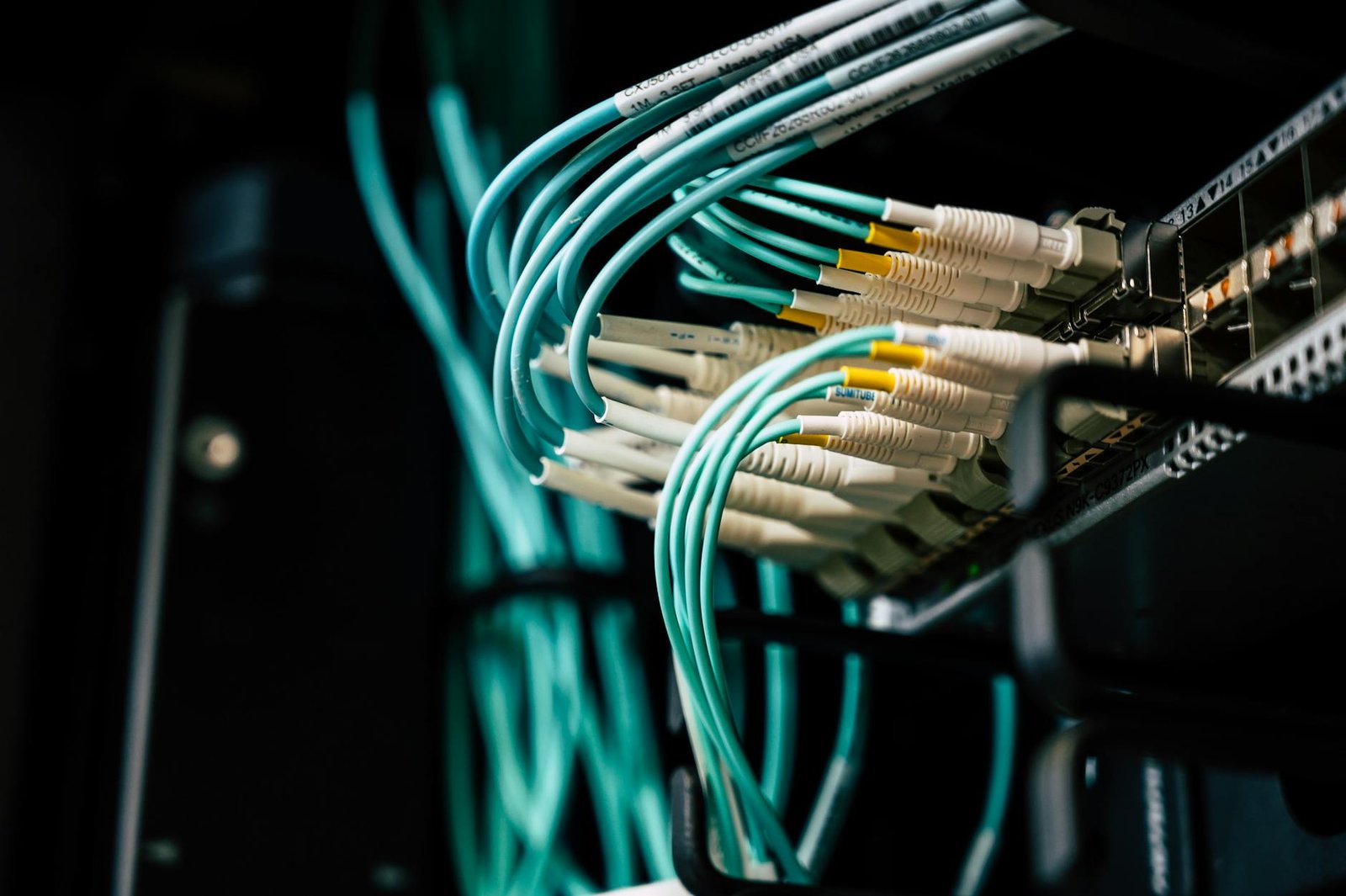Intro To SE and USE Cables
Building a structure, be it a simple home or an extensive commercial complex, often requires wrestling with decisions that aren’t immediately visible – like choosing between Service Entrance (SE) and Underground Service Entrance (USE) cables.
It’s not a question of simply picking one over the other. The choice involves understanding specific project needs, environmental factors, costs, and more.
The good news?
We’ve got you covered.
This guide takes a deep dive into the world of SE and USE cables, offering you a clear, concise comparison that lets you make the right decision for your needs.
Table of Contents

Peeling Back the Layers: SE and USE Cable in Construction
Introduction to SE and USE Cable
Cable selection in construction is often a puzzle, especially when faced with options like Service Entrance (SE) and Underground Service Entrance (USE) cables. Both have unique characteristics, uses, and differences that you need to understand to make the right choice.
Defining The Service Entrance (SE) Cable
Construction and Characteristics
SE cable is a type of electrical wire mainly designed for the final leg of the electrical service – from the utility pole to the service panel in your building.
- Made up of two insulated aluminum or copper conductors, with one bare conductor for grounding.
- The insulated conductors are typically color-coded for phase identification.
- Comes with a weather-resistant outer jacket.
Applications and Use
SE cable is most commonly used in overhead service feeders, and can also be used for branch circuits and feeders, given certain conditions of use are met.
Exploring The Underground Service Entrance (USE) Cable
Construction and Features
USE cables, as the name implies, are purposed for underground use.
- Consist of individual conductor strands insulated with moisture and heat resistant, chemically cross-linked polyethylene.
- Comes with either aluminum or copper conductors, one of which is often bare for grounding purposes.
- Completely resistant to sunlight, water, and highly resistant to crush-force.
Applications and Use
Perfect for direct burial applications, USE cable primarily delivers power from the utility line directly to the consumer in residential, industrial, or commercial environments without the need for conduits.
Comparing SE and USE Cable: Side by Side
| Features | SE Cable | USE Cable |
|---|---|---|
| Application | Mainly overhead service feeders | Underground and direct burial |
| Insulation | Polyvinyl Chloride (PVC) | Cross-linked Polyethylene (XLPE) |
| Resistant to sunlight | Limited | Excellent |
| Water-resistance | Limited | Excellent |
Understanding the difference between these two cable types will help you choose the appropriate cabling for your construction project. Know your project needs and ensure the cable you select aligns with those needs for optimal performance and safety.
The Nitty-Gritty: Deciding Between SE and USE Cable
Navigating Cable Regulations and Standards
When selecting cables, it’s not just the technical specifications that need weighing. Available industry standards and regulations also play a keen role.
National Electrical Code (NEC) Guidelines
Both SE and USE cables fall under the guidelines of the National Electrical Code (NEC). The NEC provides stringent guidelines on how, when, and where you can use each type. For instance, SE cables are typically designated for above ground use and limited to certain dwelling units.
Similarly, USE cables should adhere to Article 338 of the NEC, which allows it for direct burial and service entrance applications. These NEC stipulations ensure that construction projects uphold safety and functionality.
Digging Deep: Codes Associated with USE and SE Cables
SE and SER Cables
SE cables come in two versions:
- SEU (Service Entrance Unarmored) – Contains two insulated conductors and one uninsulated conductor.
- SER (Service Entrance Round) – Includes two or more insulated conductors with an additional grounding conductor, all wrapped in an outer jacket.
USE and USE-2 Cables
Underground Service Entrance cables also have varieties:
- USE – general category for underground service cables.
- USE-2 or RHH/RHW-2 – a type of USE cable designed with superior insulation for higher heat resistance, making them an excellent fit for solar power applications.

Factoring in the Costs: SE Vs. USE Cable Economies
Material Costs
When choosing between SE and USE cables, material costs can be a deciding factor. Copper is generally more expensive than aluminum, and in situations where a higher strength-to-weight ratio is not a priority, aluminum can be a cost-efficient choice.
Installation and Maintenance Expenses
Beyond material costs, installation and maintenance expenses should also factor into your decision. SE cables are easier to install overhead, but at the same time, they might need more maintenance in the long run, especially if exposed to harsh weather conditions. On the contrary, USE cables, while tougher to install given their underground application, may require less upkeep once installed, translating to savings in the longer run.
Operational Expenditure
Operational costs further tip the balance between SE and USE cables. Depending on the environment and the electrical loads they carry, the lifetime costs for each cable type could be substantially different.
Laying Down the Law: Local Regulations
Local regulations can sometimes dictate the kind of cable you can use. While both SE and USE cables comply with NEC standards, state and local electrical codes may have specific clauses affecting your choices. Always check local regulations before laying down cables to avoid potential pitfalls and unnecessary costs.
Putting Safety First: Fire and Environmental Considerations
Fire Resistance
While both cable types are robust and built to last, their fire resistance levels differ, with USE-2 typically possessing a higher fire resistance than SE.
Environmental Impact
The environmental impact is another issue worth considering. As our understanding of the environment evolves, so too does our need to construct safely and responsibly. Choosing environmentally friendly materials and approaches—that also comply with legislation—may influence the type of cable chosen.
The When and Where: SE and USE Cable Usage
Pinned Down: Where Do We Use SE Cable?
Built to link the utility pole to the service panel in a building, SE cable, with its weather-resistant outer jacket, is perfect for above-ground applications. It’s commonly deployed as overhead service feeders and can also be utilized in branch circuits and feeder lines, granted certain conditions are met. Though, on both scenarios, aspects like how exposed the wire is going to be to the elements or the type of building the wire will serve are important considerations to have.
Residential Use of SE Cable
The National Electrical Code correlates the use of SE cable to specific dwelling units – residential structures ranging from houses, apartment buildings, condominiums. Hence, SE cable finds a frequent home within these types of constructions. Within these infrastructures, the SE cable connecting the pole and house could be installed along the sides of the building or via an aerial connection.
SE Cable in Commercial Establishments
In commercial or non-residential establishments, the use of SE cable is less frequent. Given its limited resistance to sunlight and water, it’s preferred more in environments preventing prolonged exposure to the elements. Nonetheless, SE cable could be seen in storefronts, offices, or smaller establishments where the structure allows adequate protection to the cable.

Going Underground: Where Is USE Cable Permitted?
USE cable, due to its high resistance to sunlight, water and crush-force, are the go-to for applications requiring direct burial. These cables are quite versatile given their robust nature and can be used to link the utility line to residential, industrial, or commercial buildings without the need for conduits.
Residential Applications of USE Cable
With its superior environmental resistance, USE cable is suitable for residential infrastructures located in regions experiencing extreme weather conditions. Whether the house is in a rain-soaked area prone to water-logging or in locales with high temperature variations, USE cable with its excellent insulation, water and sunlight resistance is a dependable choice.
Industrial and Commercial use of USE Cable
Industrial and commercial settings also benefit from the resilience of the USE cables. Be it for connecting peripheral buildings in an industrial complex or wiring outdoor structures like signs, lights or kiosks in a commercial setup, USE cables can handle such power demands efficiently.

Considering the Variables: Picking Between SE and USE Cables
Environmental Variables
While opting for either SE or USE cable, one must consider multiple environmental factors. Things like geographical characteristics, weather patterns, the possibility of physical damage, or whether the cable will be buried or exposed, all play a part in the choice. While USE cables with their robust construction can weather many environmental perils, SE cables are best where there’s some manner of shielding available.
Load Considerations
Different structures have different power requirements. A residential house doesn’t bear the same electrical load as an industrial building. Taking into account the power needs of the structure the cable serves also matters while choosing between SE and USE cable.
Future-proofing
When laying cables, one should also consider future growth. If there are plans for expansion or upgrading the electrical appliances, the cables should be able to handle the increased load. Conversely, opting for a needlessly high-capacity cable could be an avoidable expense. Here too, understanding the strengths of both SE and USE cables aids in making a balanced decision.
Tuning in to the Building Type
Residential and Commercial Properties
For residential and commercial buildings, where aesthetics often play a role, SE cables’ above-ground installation, frequently aligns with the visual layout. It’s relatively easier to install and less disruptive to the landscaping.
Industrial Complexes
In contrast, for industrial complexes with larger areas to cover and potentially higher power needs, the robust USE cables with their underground installation come into play. Despite being harder to install, especially when retrofitted, they offer the advantage of being out of the line of sight, and eliminated from potential physical damage.

Bearing the Load: The Importance of Considering Building Types
Assessing Residential Load
Modern homes are filled with a variety of powerful appliances – air conditioning units, electric ovens, refrigerators, to name a few. These appliances collectively add to the load that the cable must bear. In most cases, residential buildings have moderate load requirements, suitable for either type of cable; however, the choice between SE and USE significantly depends on environmental and installation factors.
Understand Commercial Load
Commercial buildings have different power needs than residential ones due to the presence of larger electrical machines, numerous lighting fixtures, and diverse electrically powered operations. Such an environment may favor the rugged USE cable for its ability to withstand heavy loads without the risk of damage.
Industrial Load Impacts
Industrial loads can be the most demanding among all building types. From massive machinery to continuous operation schedules, these factors can subject the cables to extreme situations. Industrial environments can include exposure to heavy machinery, heat, and corrosive chemicals. These conditions make USE cables the preferred choice due to their robust nature and exceptional resistance.

The Long and Short of It: Length Considerations
Distance and Signal Efficacy
The physical length of cable needed can also affect the decision between SE and USE cable. A longer run may cause signal loss or voltage drop, which can impact the performance of appliances connected to the circuit. Hence, for longer runs, the type of cable, its insulation, and material can be critical for effective transmission of power.
Short Distances and Cable Choice
Shorter cable runs, typically seen in residential and small commercial buildings, may not be significantly affected by voltage drop. In such cases, SE cables, being easier to install and maintain, may be a preferable choice, given appropriate environmental conditions.
Unearth potential pitfalls: Cable Damage Concerns
Deterioration Over Time
Regardless of their rugged construction, both SE and USE cables can deteriorate over time. Exposure to sunlight, water, temperature fluctuations, and physical damage can compromise insulation integrity leading to loss of efficiency or a hazardous situation.
Damage During Installation
Cable damage could also occur during installation. Here USE cables, designed for direct burial and high crush resistance, could have the upper hand over SE cables.
Breaking Down Costs: What It Takes to Replace An Entrance Cable
Estimating Replacement Expenses
Factoring in costs for replacement of an entrance cable, whether it’s an SE or USE cable, involves a variety of elements:
- Material Costs – The cost of the cable itself and any additional materials needed for installation. As mentioned earlier, copper is generally more expensive than aluminum.
- Labor Costs – The cost to employ a licensed electrician to carry out the replacement process. This fee generally depends upon the complexity of the job, the length of cable to be replaced, and local rates.
- Permit Costs – In some jurisdictions, a permit may be required to undertake substantial electrical work. The cost of permit varies from place to place.
- Additional Costs – There could potentially be more expenses. For instance, if the cable is underground, you may need to hire an excavator. Or if a utility line needs to be temporarily powered down, there might be a charge for that service.
Impact of Not Replacing Faulty Wiring
Though replacing entrance cable has its expenses, one cannot ignore the dangers and potential financial implications of not replacing faulty wiring. Faulty or deteriorated wiring can lead to loss of power, damaging appliances, or even fire hazards. The costs of these events will likely far outweigh the expense of proactive replacement.
Handling the Handover: From Utility Line to Building
SE Cable: The Aerial Handover
The SE cable’s primary function is to handle the handover of power from the utility pole to the residential or commercial structures. This handover is generally done overhead in a ‘point A to point B’ fashion. It’s crucial that the SE cables are durable and properly insulated to withstand the elements while ensuring the efficient transmission of power.
USE Cable: The Underground Link
Where overhead cabling is not desired or suitable, USE cables are the perfect solution as they facilitate underground transmission of power. Whether it’s across a private yard or commercial complex, the USE cable, owing to its high environmental resistance, can safely transfer power from the utility line to the consumer.

Let’s Talk Durability: When To Replace Your Cables
Lifeline of SE and USE Cables
While it’s not easy to pin down a universal lifespan for SE or USE cables, factors like usage, environmental conditions, and installation quality directly impact the durability of these cables. But, routine inspections and maintenance can help identify signs of wear and tear, preventing unexpected failures.
When To Replace SE Cables
Tell-tale signs for replacement of SE cables include visible damage to the cable’s protective casing, repeated electrical faults, overheating, or simply old age. As SE cables majorly function above ground, they are subjected to climate changes, hence, they might require replacement sooner than their underground counterparts.
When To Replace USE Cables
Replacement of USE cables is usually called for when there is loss or inconsistency in power supply without any visible damage at the service panel. Other signs could be shock or spark when coming in contact with the ground or earthed items, or frequent tripping of circuit breakers. Since these cables are usually buried and not readily visible, identifying their deterioration can be challenging. However, their rugged construction can provide a longer active duration before they require replacement.
Dig Deeper: The Role of Excavation in USE Cable Placement
Understanding Direct Burial
The USE cable is designed for direct burial, i.e., it can be laid directly into the ground without needing conduit (protective piping). While this eliminates the need and expense for buried conduit, it does raise the need for excavation.
Calculating Excavation Costs
The cost of excavation varies, and it’s primarily dependent on factors such as the distance to be covered, the depth required, and the type of soil to be excavated. Furthermore, if there are existing services like water or gas pipes to navigate, that may increase the complexity and cost of the excavation.
Inside Vs Outside: SE and USE Cable Placement
Inside Placement of SE Cable
While traditionally associated with exterior applications like bridging the gap between utility pole and the structure, the use of SE cable is not limited to outer surfaces only. They have ample use in internal applications like branch circuits.
Outside Placement for USE Cable
Given their strong resistance to environmental factors, USE cables are generally preferred for external applications, often buried underground. Their robust nature ensures power delivery is unhindered in diverse weather conditions and terrains.
A Final Note on SE and USE Cables
To wrap things up, both Service Entrance (SE) and Underground Service Entrance (USE) cables exhibit distinct characteristics that suit varied application environments. SE cables are typically employed in overhead service feeders, while USE cables shine for their suitability in underground and direct burial usage thanks to their excellent resistance to environmental factors.
Ultimately, understanding the contrasting features of these cables – from their application, insulation to their level of resistance against sunlight and water – can lead to a more informed cable selection for your construction project, ensuring both safety and optimal performance. Keep your project’s particular needs in mind, because when it comes to cabling: one size certainly does not fit all.






